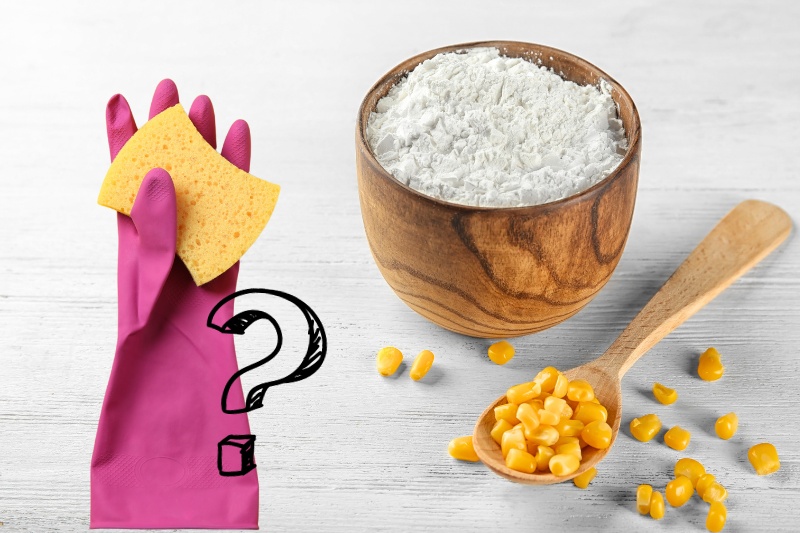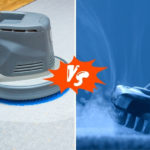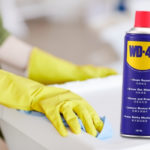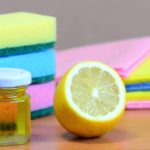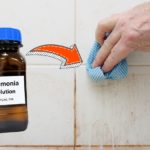Cornflour (also called cornstarch) is a pantry item often used for thickening sauces and baking.
But did you know this kitchen staple has hidden talents beyond the culinary realm? Its natural properties make it a versatile and eco-friendly alternative for various cleaning tasks around the house.
From polishing surfaces to freshening fabrics, cornflour can be an invaluable addition to your cleaning arsenal.
Here we explore eight surprising uses of cornflour in cleaning and laundering that you can try next time you clean your home.
What Can You Clean with Cornflour?
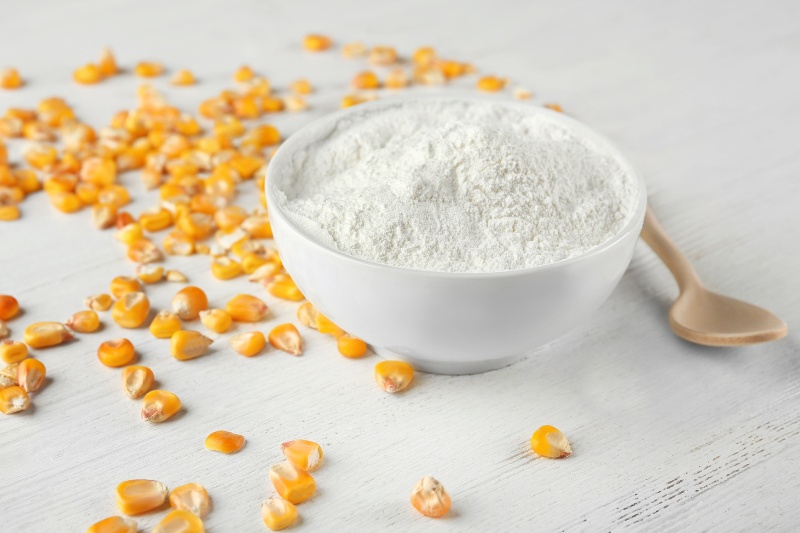
In a world where many cleaning products contain harsh chemicals, cornflour emerges as a natural and safe alternative.
Its natural ability to absorb moisture, lift stains, and provide a gentle abrasive action makes it a valuable tool for a variety of cleaning tasks, including:
- Removing stains from carpets
- Cleaning windows
- Polishing furniture
- Polishing silver
- Removing grease stains from clothes
- Deodorising shoes
- Removing stains from leather
- Lifting pet hair from surfaces
Here we look at using cornflour for these cleaning tasks in more detail, complete with a step-by-step guide so you can try them at home!
1. Removing stains from carpets
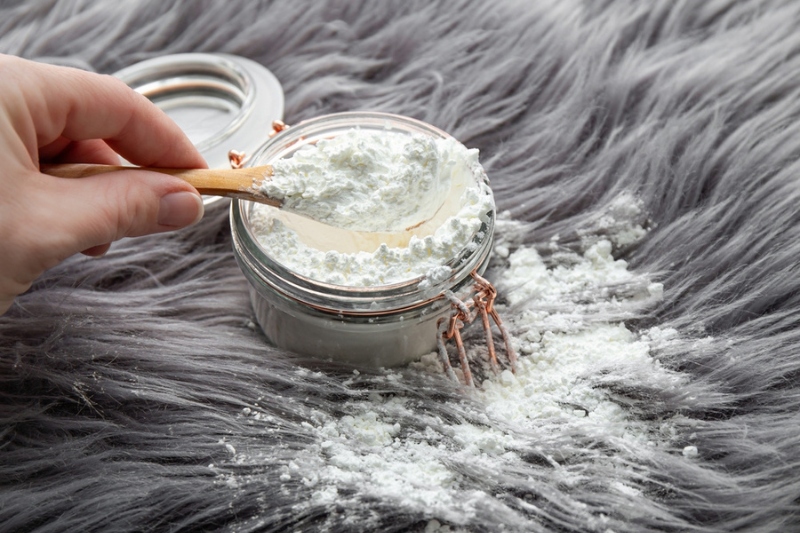
Accidents happen, but cornflour can come to the rescue when it comes to carpet stains.
It is particularly effective at tackling oil-based carpet stains like foundation, absorbing these substances and lifting them from the fibres.
Using cornflour to remove carpet stains relies on a simple method:
- Blot the stained area with a clean cloth to absorb as much liquid as possible.
- Sprinkle a generous amount of cornflour directly onto the stain, ensuring it’s covered.
- Allow the cornflour to sit on the stain for at least 15 to 30 minutes.
- Use a vacuum cleaner to thoroughly remove the cornflour from the carpet.
- Examine the treated area to see if the stain has been lifted and repeat if necessary.
- Use a damp cloth to gently blot the area to remove any remaining cornflour residue.
- Allow the carpet to air dry completely before walking on it.
As always, we recommend testing a small, inconspicuous area of your carpet before applying cornflour to ensure it doesn’t cause discolouration or damage.
2. Cleaning windows
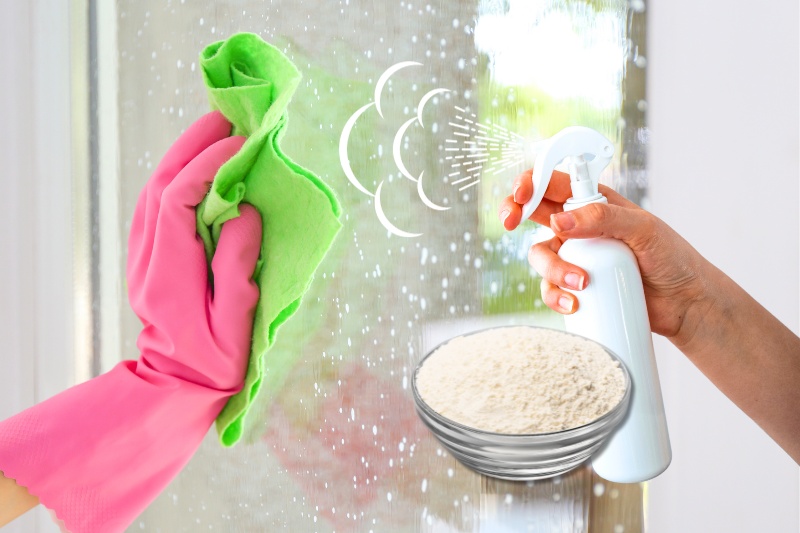
Create your own streak-free window cleaner by mixing cornflour with water. The gentle abrasive nature of cornflour helps remove dirt and grime while leaving your windows sparkling clean.
To clean your windows with cornflour, follow these steps:
- Put one tablespoon of cornflour and one cup of distilled water in a spray bottle.
- Shake the bottle well to ensure the cornflour is dissolved.
- Use a dry microfibre cloth to remove dust and debris from the window and frame.
- Lightly mist the cornflour solution onto the glass, being careful not to oversaturate the window.
- Use a clean microfibre cloth to wipe the glass, starting at the top and working your way down.
- Buff the window using a clean, dry cloth to ensure a streak-free, polished finish.
You may need to repeat the above process for heavily soiled or streaky windows. If doing so, make sure to change your cleaning cloth or paper towel if it becomes too damp or dirty.
You can also add a splash of white vinegar to the cornflour solution for extra cleaning power.
3. Polishing furniture
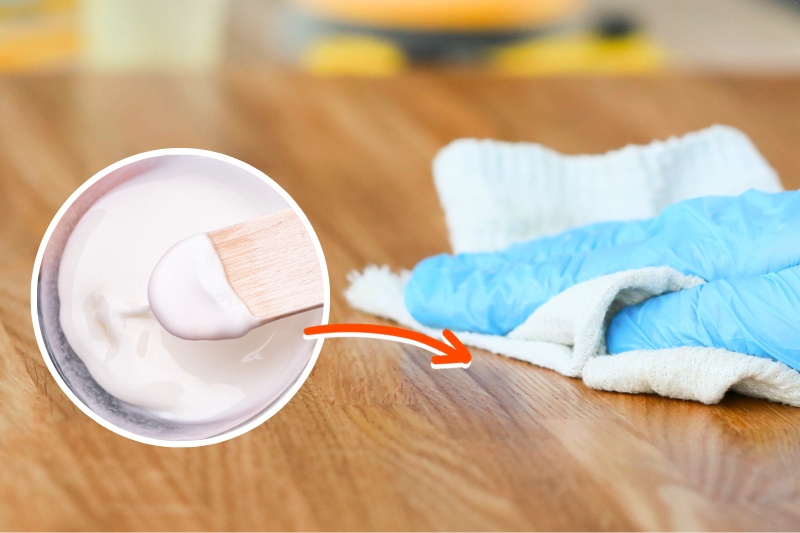
Give your wooden furniture a natural shine by making a paste with cornflour and water. Apply the paste to wooden surfaces, let it dry, and buff it off with a clean cloth for a polished finish.
Here’s a step-by-step guide for a closer look at this process:
- In a bowl, mix cornflour with water to create a paste (1 part cornflour to 2 parts water).
- Dip a clean cloth into the cornflour paste, ensuring it’s evenly coated.
- Apply a thin, even layer of the paste onto the wooden surface you want to polish.
- Allow the paste to dry on the furniture, which should take around 5 to 15 minutes.
- Once dry, use a clean cloth to buff the furniture in circular motions, applying slight pressure.
- After buffing, use a separate clean cloth to remove any remaining residue.
To enhance the shine and add a pleasant scent, mix a small amount of olive oil or lemon juice into the cornflour paste before applying it to the furniture.
Be cautious not to use too much oil, as it can make the surface feel greasy.
4. Polishing silver
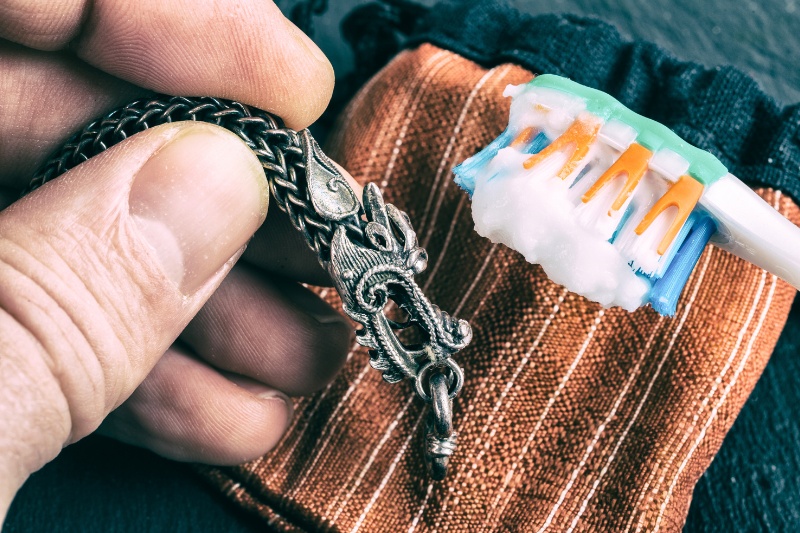
Using cornflour as a silver polish is a gentle and effective method to bring back the shine to your tarnished silver items.
It’s as simple as creating a cornflour paste, rubbing it onto your silverware, and rinsing. Here is a breakdown of the key steps:
- Mix cornflour and water to create a paste, using a ratio of 1 part cornflour to 2 parts water.
- Apply a thin layer of the paste to the tarnished areas of the silver item using a sponge.
- Rub the paste into the silver, applying light pressure and working in circular motions.
- Allow the cornflour paste to sit on the silver for a few minutes.
- Fill a basin or bowl with warm water and submerge the silver item in the water.
- Use a soft toothbrush to gently scrub away the paste and remaining tarnish.
- Rinse the item thoroughly with clean water and pat dry with a clean microfibre towel.
- Buff the surface using gentle circular motions to bring out the shine.
Although cornflour is an effective silver polish, be cautious with intricate designs—you must be extremely gentle while rubbing the paste to avoid damaging the detailed patterns.
After polishing, store your silver items in a cool, dry place to help prevent future tarnish.
5. Removing grease stains from clothes

If you’ve splashed oil or salad dressing on your outfit, consider using cornflour as a grease stain remover.
The powder is highly absorbent and an effective way to lift stubborn grease stains from clothes.
Gently blot the stain with a clean cloth to remove excess grease, then follow these steps:
- Sprinkle a generous amount of cornflour onto the grease stain on both sides of the fabric.
- Allow the cornflour to sit on the stain for about 15 to 20 minutes to absorb the grease.
- Use a soft brush or a toothbrush to gently brush away the cornflour from the stain.
- Apply a small amount of washing-up liquid or laundry detergent directly onto the stained area.
- Gently rub the detergent into both sides of the fabric using your fingers or a soft cloth.
- Rinse the fabric under cold running water with the stain facing down to flush out the stain.
- Repeat if needed. Otherwise, launder and dry your garments according to their care labels.
When using cornflour as a stain remover for laundry, always treat the stain as soon as possible to improve your chances of removal.
Also, avoid using hot water on grease stains and don’t launder and dry until you’re confident that the stain has gone—heat can set the stain deeper into the fibres.
6. Deodorising shoes
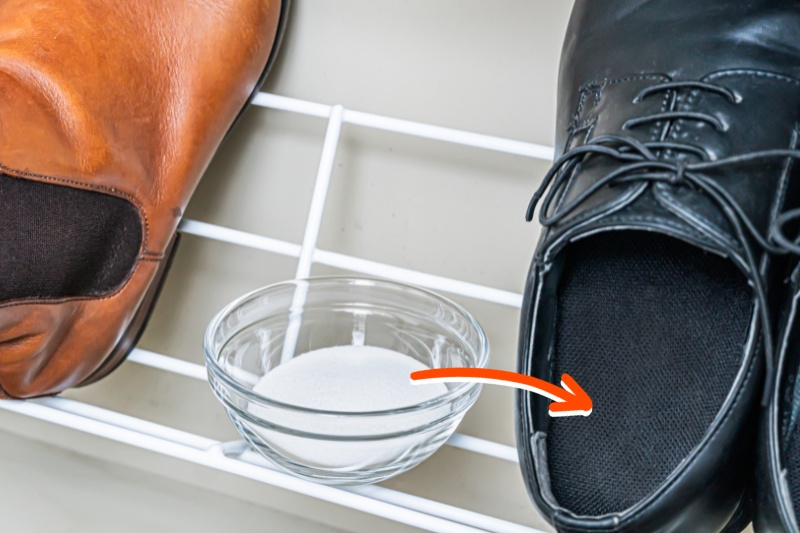
You can keep your shoes smelling fresh by sprinkling cornflour inside them. Cornflour absorbs moisture, helping to eliminate odours and prevent bacterial growth.
Before deodorising, ensure your shoes are clean and remove insoles or inserts. Then, follow these steps:
- Sprinkle 2 or 3 tablespoons of cornflour evenly inside each shoe, covering the entire interior.
- Gently shake the shoes to help distribute the cornflour and ensure it reaches all corners.
- Allow the cornflour to sit inside the shoes for several hours or overnight.
- Turn the shoes upside down over a bin and tap together to remove any excess cornflour.
- Leave the shoes in a well-ventilated area to air out further.
Once the cornflour has had a chance to work its magic, your shoes should feel fresher.
To prevent excess moisture and odour buildup in the future, consider wearing synthetic socks when you wear them. Cotton socks retain moisture and can cause your feet to smell, making odours worse.
7. Removing stains from leather
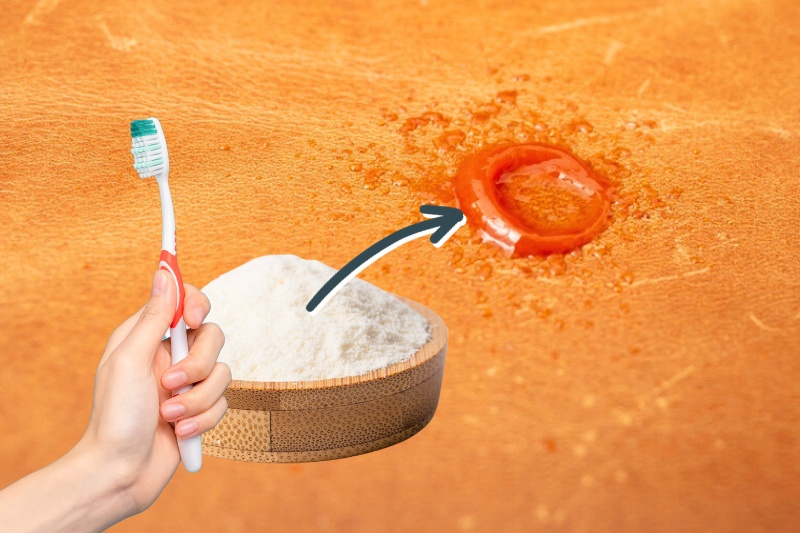
Cornflour can also be used to treat stains on leather surfaces. It’s best at lifting oil-based stains, such as makeup, deodorant, and moisturisers, and works by absorbing the excess oil from the material.
Here is how you can use cornflour to clean leather:
- Sprinkle a small amount of cornflour directly onto the stained area of the leather.
- Allow the cornflour to sit on the stain for several hours or overnight.
- Use a soft brush or a toothbrush to gently brush away the cornflour from the stain.
- Examine the stained area to see if the oil has been lifted and repeat if necessary.
After cleaning, you can apply a leather conditioner to the entire leather item to keep it soft and supple. Follow the instructions on the conditioner and buff the leather with a clean, dry cloth.
Allow the leather to air dry naturally afterwards, as heat (from hairdryers, for example) can cause the leather to crack.
8. Lifting pet hair from surfaces
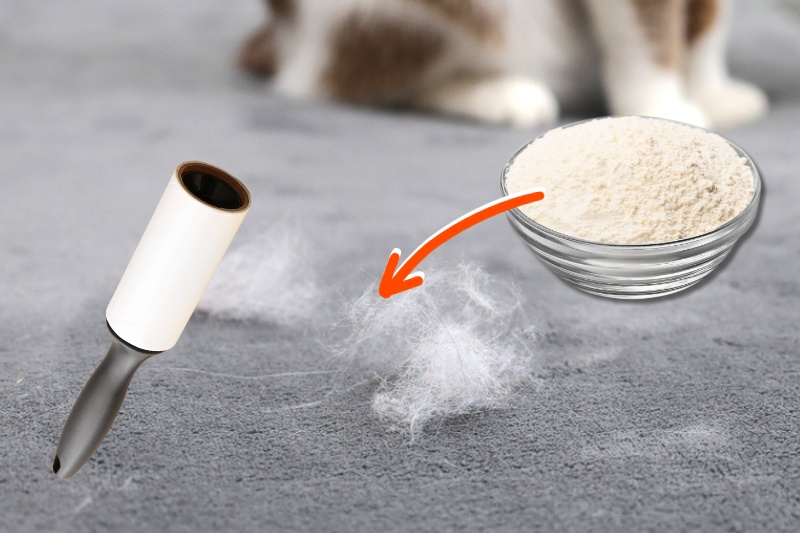
Struggling with pet hair on upholstery or clothing? Cornflour is one of our favourite pet hair cleaning hacks! It can help loosen the hair, making it easier to remove.
Rub a small amount of cornflour onto the fabric, then brush or shake it off, as explained in the following steps:
- Sprinkle a small amount of cornflour over the surface covered in pet hair.
- Allow the cornflour to sit for about 15 minutes—it should start to clump and collect pet hair.
- Use a soft brush, lint roller, or your hands to gently brush or shake the surface.
- Use a vacuum cleaner with an upholstery attachment to thoroughly vacuum the surface.
- Vacuuming should lift the loosened pet hair and the cornflour, leaving a clean surface.
- Examine the surface and, if needed, repeat in areas where pet hair is still present.
- Use a microfibre towel to wipe down the surface and remove any remaining cornflour residue.
Cornflour can be used to lift pet hair from a variety of surfaces. However, it is particularly effective on fabric-covered furniture, such as sofas and chairs, where pet hair tends to cling.
To prevent excessive pet hair build-up, we also recommend brushing your pet and vacuuming your home regularly.

Hannah has a passion for cleaning. She worked her way around Australia by cleaning hostels in exchange for free accommodation and used her cleaning skills to bag a job as a chalet host for a luxury ski company in France.
